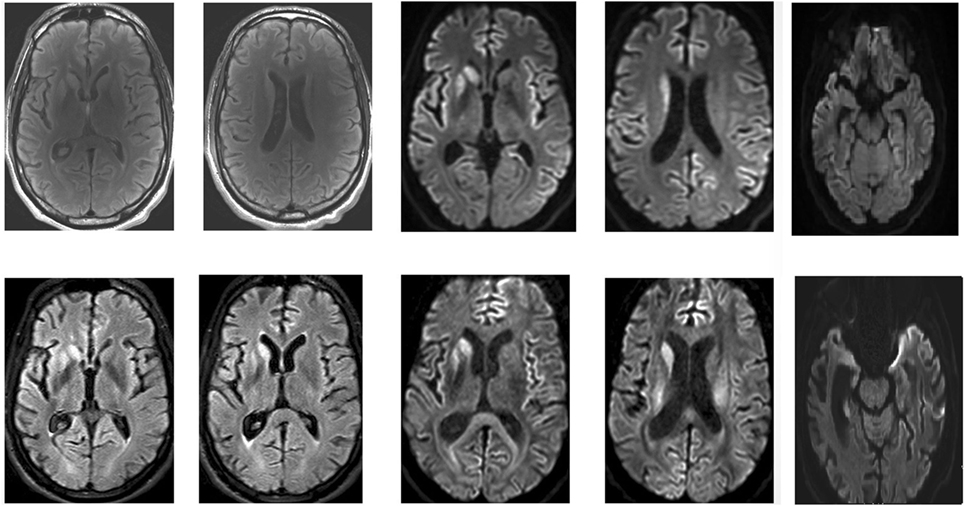Transmissible Spongiform Encephalopathies (TSEs) are a rare but fatal group of neurodegenerative diseases caused by prions—misfolded proteins that lead to progressive brain damage. Among these, Creutzfeldt-Jakob Disease (CJD) is the most well-known human prion disease. However, there are several other TSEs that affect both humans and animals, each with distinct characteristics.
This article provides a comparative analysis of CJD and other major TSE disorders, highlighting their causes, symptoms, transmission mechanisms, and impact on the brain.
Understanding Prion Diseases
Unlike bacterial or viral infections, TSEs are caused by prions, which are abnormally folded versions of the prion protein (PrP) found in the brain. Once misfolded, prions induce normal PrP to adopt the same misfolded shape, leading to brain cell destruction. The affected brain tissue develops microscopic holes, giving it a sponge-like appearance—hence the term “spongiform encephalopathy.”
Creutzfeldt-Jakob Disease (CJD): The Most Common Human TSE
CJD is the most frequently occurring TSE in humans, though still extremely rare, affecting approximately one person per million annually worldwide. It presents in several forms:
- Sporadic CJD (sCJD): The most common type, arising spontaneously without known cause. It accounts for 85-90% of CJD cases.
- Genetic CJD (gCJD): Caused by inherited mutations in the PRNP gene, which encodes the prion protein.
- Variant CJD (vCJD): Linked to the consumption of beef contaminated with Bovine Spongiform Encephalopathy (BSE), also known as “mad cow disease.”
- Iatrogenic CJD (iCJD): Transmitted via contaminated surgical instruments, corneal transplants, or human-derived growth hormones.
Symptoms of CJD
Regardless of the type, CJD typically progresses rapidly, with symptoms including:
- Memory loss and cognitive decline
- Personality changes and psychiatric symptoms
- Muscle stiffness, tremors, and myoclonus (involuntary muscle jerks)
- Vision problems and unsteady gait
- Coma and death within a year of symptom onset
Comparing CJD to Other TSE Disorders
1. Fatal Familial Insomnia (FFI)
- Cause: Genetic mutation in the PRNP gene
- Affected Region: Primarily affects the thalamus, which regulates sleep
- Symptoms: Severe insomnia, hallucinations, autonomic dysfunction (sweating, fever), and rapid cognitive decline
- Progression: Death occurs within 12 to 18 months
Unlike CJD, which causes widespread brain degeneration, FFI mainly disrupts sleep patterns due to thalamic degeneration.
2. Kuru
- Cause: Transmission through ritualistic cannibalism (historically observed in Papua New Guinea’s Fore tribe)
- Symptoms: Ataxia (loss of muscle control), tremors, emotional instability, and laughter-like outbursts (“laughing sickness”)
- Progression: Slow progression over several years, leading to severe neurological decline and death
Kuru was nearly eradicated after cannibalistic practices were abandoned, unlike CJD, which still occurs sporadically.
3. Bovine Spongiform Encephalopathy (BSE) and Variant CJD (vCJD)
- Cause: Consumption of contaminated beef from cows infected with BSE (mad cow disease)
- Symptoms: Similar to CJD but with early psychiatric symptoms (depression, anxiety) before neurological decline
- Progression: Slower than sporadic CJD, with a longer incubation period and mean survival of 13-14 months after symptom onset
vCJD differs from sCJD in that it primarily affects younger individuals and has a longer incubation period before symptoms appear.
4. Chronic Wasting Disease (CWD) (Affects deer, elk, and moose)
- Cause: Direct or indirect exposure to prions shed in saliva, urine, and feces of infected animals
- Symptoms: Weight loss, disorientation, excessive salivation, and behavioral changes
- Progression: Can take months to years to develop fully
Unlike CJD, which is not naturally contagious, CWD spreads efficiently among deer populations and poses concerns about possible transmission to humans.
5. Scrapie (Sheep and Goats)
- Cause: Prion accumulation in the nervous system
- Symptoms: Itching (leading to excessive scraping, hence the name), loss of coordination, behavioral changes
- Progression: Develops over months to years, ultimately fatal
Scrapie is not known to infect humans, unlike BSE, which has crossed the species barrier to cause vCJD.
Key Differences Between CJD and Other TSEs
| Feature | Creutzfeldt-Jakob Disease (CJD) | Fatal Familial Insomnia (FFI) | Kuru | Variant CJD (vCJD) | Chronic Wasting Disease (CWD) | Scrapie |
|---|---|---|---|---|---|---|
| Primary Cause | Sporadic, genetic, infectious | Genetic mutation (PRNP) | Cannibalism | Consuming BSE-infected meat | Direct transmission in deer | Environmental prion exposure |
| Human/Animal? | Human | Human | Human | Human | Animal (deer, elk) | Animal (sheep, goats) |
| Affected Brain Region | Widespread brain atrophy | Thalamus (sleep center) | Cerebellum (balance, coordination) | Widespread | Widespread | Widespread |
| Symptoms | Cognitive decline, ataxia, myoclonus | Insomnia, hallucinations, fever | Tremors, ataxia, laughter | Psychiatric symptoms, dementia | Weight loss, drooling, disorientation | Itching, lack of coordination |
| Transmission | Spontaneous, genetic, or iatrogenic | Genetic | Direct (cannibalism) | Consuming infected meat | Direct contact with infected animals | Indirect environmental exposure |
| Progression | Rapid (months) | 12-18 months | Years | Slower than sCJD | Slow (years) | Slow (years) |
Conclusion
Creutzfeldt-Jakob Disease (CJD) is the most well-known human prion disease, but it shares similarities with other TSEs, such as FFI, Kuru, vCJD, and animal prion diseases like CWD and Scrapie. While all these diseases result from prion-induced neurodegeneration, they differ in transmission, progression, and affected brain regions.
Understanding these distinctions is crucial for diagnosing prion diseases, preventing transmission, and advancing research into potential treatments. Though prion diseases remain incurable, continued scientific efforts may one day unlock strategies to combat these mysterious and lethal disorders.



